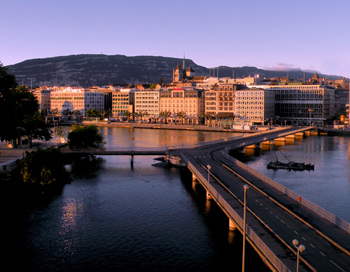
After The Darkness, Light in Switzerland
by Tom Koppel
Imagine my surprise at coming upon — in a French-speaking European city — a huge statue honouring one of North America’s notable colonial-era leaders. None other than Roger Williams, the founding father of Rhode Island.
But this is Geneva, Switzerland, a uniquely international city. It is the birthplace and home of the Red Cross. The League of Nations had its headquarters here after the First World War, and countless UN agencies are still based in Geneva today. One plaza features paving stones that are illuminated at night with words of felicitation in seven languages.
Ursula, our personal guide, meets my wife and me at our classic mid-nineteenth century hotel, which has a rich history all its own. She leads us across the Rhone River and along the shore of lovely Lake Geneva, with its flotilla of swans and iconic fountain, a water jet that shoots a powerful stream 460 feet into the air. We enter the quaint cobbled alleys and squares of the pedestrian-only Old Town. Geneva, she explains, had been a small but strategically situated municipality since Roman times, and has hosted a regional trade fair since 1000 A.D.
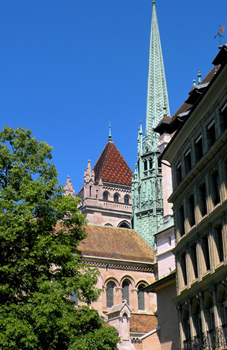 It became a key Protestant city-state during the Reformation in the mid-1500s, when French theologian John Calvin was the dominant figure. Geneva offered safe haven to Protestants persecuted in Catholic countries. French Huguenots, including prosperous professionals and craftsmen, poured in. Ursula points out medieval buildings with arched Gothic windows on the lower floors, but a simpler and contrasting style above. To make room for all the newcomers, Ursula tells us, extra stories were hastily added to many houses, hence the quirky architecture.
It became a key Protestant city-state during the Reformation in the mid-1500s, when French theologian John Calvin was the dominant figure. Geneva offered safe haven to Protestants persecuted in Catholic countries. French Huguenots, including prosperous professionals and craftsmen, poured in. Ursula points out medieval buildings with arched Gothic windows on the lower floors, but a simpler and contrasting style above. To make room for all the newcomers, Ursula tells us, extra stories were hastily added to many houses, hence the quirky architecture.
Geneva grew and flourished, becoming a centre of publishing, clock-making and gold-smithing. Refugee English Puritans translated and printed their distinctive Geneva Bible. It came to take precedence for them over the King James Version, and was carried to the New World on the Mayflower.
We stroll past the city hall, the opera house, museums, theatres and the Saint Pierre cathedral, with its impressive green spire. Over 850 years old, the cathedral has been Protestant since 1535, when the Bishop, loyal to Rome, fled and the Catholic altars, statues and paintings were destroyed. John Calvin delivered thousands of sermons there. Outside one restaurant, patrons quaff a popular local beer, named Calvinus. At the nearby tavern of the Women’s Temperance Society, only non-alcoholic drinks are served.
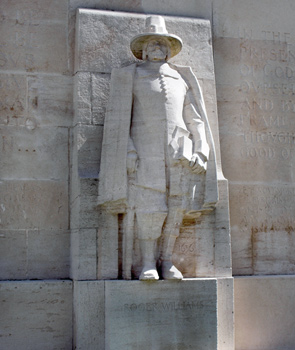 We come to a park on the grounds of the university fringed by a long, high rampart of stone. Formerly a section of the medieval city wall, this is now known as the Reformation Wall. Inaugurated in 1909 to commemorate the 400th anniversary of Calvin’s birth, it is the backdrop to ten giant statues of key Europeans from Reformation times, including Calvin himself. There is also the Scottish Presbyterian, John Knox, who sought refuge in Geneva when Mary Tudor (“Bloody Mary”) ascended the English throne and restored Roman Catholicism in Britain. Some of the figures, including Oliver Cromwell and Roger Williams, never set foot in Geneva itself. Born and raised in England, Williams studied theology, became a Puritan, and rejected the Church of England. He sailed to Boston a decade after the first Pilgrims arrived in Salem and shortly after the Massachussetts Bay colony was founded.
We come to a park on the grounds of the university fringed by a long, high rampart of stone. Formerly a section of the medieval city wall, this is now known as the Reformation Wall. Inaugurated in 1909 to commemorate the 400th anniversary of Calvin’s birth, it is the backdrop to ten giant statues of key Europeans from Reformation times, including Calvin himself. There is also the Scottish Presbyterian, John Knox, who sought refuge in Geneva when Mary Tudor (“Bloody Mary”) ascended the English throne and restored Roman Catholicism in Britain. Some of the figures, including Oliver Cromwell and Roger Williams, never set foot in Geneva itself. Born and raised in England, Williams studied theology, became a Puritan, and rejected the Church of England. He sailed to Boston a decade after the first Pilgrims arrived in Salem and shortly after the Massachussetts Bay colony was founded.
His convictions soon ran afoul of the Massachussetts authorities. Williams favoured the separation of church and state and opposed any establishment of religion. He argued that if political leaders dictated how Christianity was to be practised, it would inevitably corrupt the religious sphere. This was a very radical concept. Williams was also one of America’s earliest abolitionists, opposing the slave trade in any of the colonies. Banished from Massachussetts, Williams sought asylum among the neighbouring Narragansett Indians. He established Providence Plantation (situated in today’s city of Providence, Rhode Island), founded the first Baptist church in America, and defended Indian rights.
Williams’ enduring legacy was assured over a century later, when freedom of religion and the separation of church and state were enshrined in the First Amendment of the U.S. Bill of Rights.
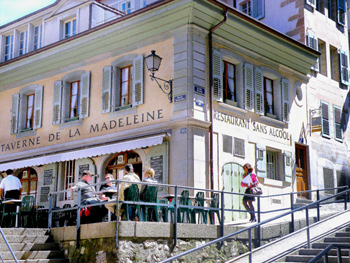 Ursula tells us how his ideas eventually had impact in the Old World as well, especially influencing the constitution of Geneva. During the era of Calvin, the city was entirely Protestant. No Catholic churches were allowed. But by 1847, times had changed. Geneva’s leading statesman, James Fazy, was drafting a new constitution. Years earlier, in Paris, Fazy had been friendly with the French General Lafayette, who had fought the British alongside George Washington and admired the American political system. Fazy incorporated many principles derived from the U.S. Constitution. Church and state were separated, and religious freedom guaranteed. Catholicism was again tolerated in Geneva. Protestantism lost its exclusive status.
Ursula tells us how his ideas eventually had impact in the Old World as well, especially influencing the constitution of Geneva. During the era of Calvin, the city was entirely Protestant. No Catholic churches were allowed. But by 1847, times had changed. Geneva’s leading statesman, James Fazy, was drafting a new constitution. Years earlier, in Paris, Fazy had been friendly with the French General Lafayette, who had fought the British alongside George Washington and admired the American political system. Fazy incorporated many principles derived from the U.S. Constitution. Church and state were separated, and religious freedom guaranteed. Catholicism was again tolerated in Geneva. Protestantism lost its exclusive status.
Today, Geneva is known as Switzerland’s city of light. Engraved on the wall near the statue of Williams is the motto of the Reformation, Post Tenebras Lux: “After the darkness, light.” Given the links between Geneva and North America, I begin to see how the bright spirit of Roger Williams continues to shine across the centuries. And why he is revered in a city dedicated to international peace and goodwill.
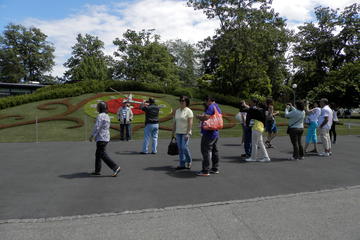
Walking Tour of Old Geneva and United Nations
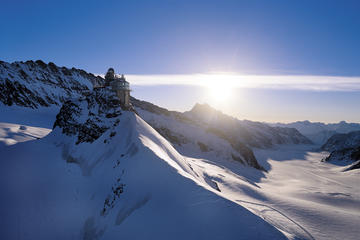
5-Day Best of Switzerland from Geneva
If You Go:
♦ We stayed at Geneva’s oldest hotel, the exquisite lakeside Four Seasons Hotel des Bergues, built in 1834. Along with refined elegance and impeccable service, it has a Michelin Star main dining room and an incomparable rooftop restaurant featuring Japanese-Peruvian fusion cuisine.
♦ For private English-language tours with a deeply knowledgeable and personable guide, contact Ursula Diem-Benninghoff at u.d-b@bluewin.ch (Tel/fax: 022 771 17 27, Mobile: 079 471 75 18)
♦ For further information on accommodation options, city attractions and tours, see Geneva Tourism
About the author:
Tom Koppel is a veteran Canadian author, journalist and travel writer. His latest popular book on history, science and travel is Mystery Islands: Discovering the Ancient Pacific. Koppel provides a personal tour of that vast ocean and presents the latest findings in archaeology, genetics and carbon dating. For signed copies of Mystery Islands, just contact Tom: koppel@saltspring.com
All photos are by Annie Palovcik:
Geneva Old Town at dusk
Saint Pierre Cathedral
Roger Williams statue at Reformation Wall
Tavern run by the Women’s Temperance Society


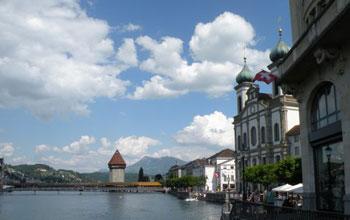
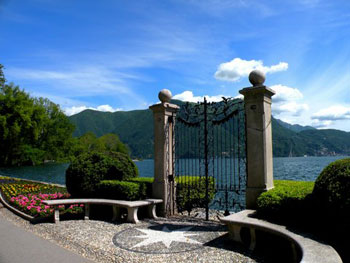 My wife Annie and I are enjoying an eye-opening Alpine sojourn as guests of dear old friends, Margit and Andres, health care professionals who live in Graubuenden but have stayed with us in Canada several times. When not having to work, they drive us around, and we make side trips on our own by train. We had expected beautiful mountain scenery, postcard-perfect towns and a prosperous land of clean efficiency, where the predominant German and French-speaking populations get along. But we had never imagined the full diversity of the rich Swiss cultural tapestry, the quirky and endearing coexistence of the traditional and modern, and the way history is cherished and kept alive.
My wife Annie and I are enjoying an eye-opening Alpine sojourn as guests of dear old friends, Margit and Andres, health care professionals who live in Graubuenden but have stayed with us in Canada several times. When not having to work, they drive us around, and we make side trips on our own by train. We had expected beautiful mountain scenery, postcard-perfect towns and a prosperous land of clean efficiency, where the predominant German and French-speaking populations get along. But we had never imagined the full diversity of the rich Swiss cultural tapestry, the quirky and endearing coexistence of the traditional and modern, and the way history is cherished and kept alive.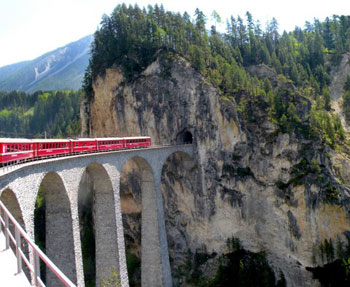 She takes us to three impressive 13th to 15th century castles that dominate Bellinzona, built by the dukes of Milan to command a strategic river valley and to tax trade along the passes leading northward. Montebello castle, high on a slope, hosts an annual medieval festival, with jousting, period costumes, and roast pig eaten without cutlery from wooden bowls.
She takes us to three impressive 13th to 15th century castles that dominate Bellinzona, built by the dukes of Milan to command a strategic river valley and to tax trade along the passes leading northward. Montebello castle, high on a slope, hosts an annual medieval festival, with jousting, period costumes, and roast pig eaten without cutlery from wooden bowls.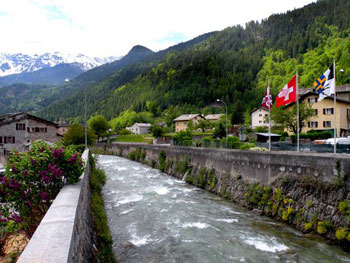 Our destination is Poschiavo, an enchanting village in another isolated Italian-speaking region that is part of Graubuenden itself. We stay at the historic Albrici hotel, built in the 17th century and run for 150 years by the same family. The 10 bedrooms feature antique furniture but no phones, TV or other electronics. We dine outside on the cobblestone piazza, which is bracketed by two ancient churches. The owner recommends some regional main dishes. I enjoy flavourful buckwheat noodles in a creamy sauce, garnished with a skewer of endive and slices of salami. Annie savours the tasty spinach dumplings (gnocchi) with melted cheese, similarly garnished.
Our destination is Poschiavo, an enchanting village in another isolated Italian-speaking region that is part of Graubuenden itself. We stay at the historic Albrici hotel, built in the 17th century and run for 150 years by the same family. The 10 bedrooms feature antique furniture but no phones, TV or other electronics. We dine outside on the cobblestone piazza, which is bracketed by two ancient churches. The owner recommends some regional main dishes. I enjoy flavourful buckwheat noodles in a creamy sauce, garnished with a skewer of endive and slices of salami. Annie savours the tasty spinach dumplings (gnocchi) with melted cheese, similarly garnished.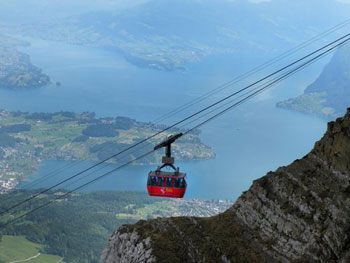 Even the larger central Swiss cities offer an intriguing mix of old and new. In Zurich, our hotel abuts the beautifully maintained old town. Its narrow streets are lined with medieval towers and intersect at ornate fountains featuring sculptures. We indulge in sweets at an elegant 19th century pastry shop but also take the funicular up to see the renowned technical institute just above, where Albert Einstein got his doctorate. In Lucerne, we walk the massive old city walls and cross the landmark 14th century covered bridge. But we also ride a spectacular cog railway (the world’s steepest) up 2,132 metre Mt. Pilatus, where an ultra-modern hotel adjoins a much older one, and watch a paraglider lift off and drift away on the thermals.
Even the larger central Swiss cities offer an intriguing mix of old and new. In Zurich, our hotel abuts the beautifully maintained old town. Its narrow streets are lined with medieval towers and intersect at ornate fountains featuring sculptures. We indulge in sweets at an elegant 19th century pastry shop but also take the funicular up to see the renowned technical institute just above, where Albert Einstein got his doctorate. In Lucerne, we walk the massive old city walls and cross the landmark 14th century covered bridge. But we also ride a spectacular cog railway (the world’s steepest) up 2,132 metre Mt. Pilatus, where an ultra-modern hotel adjoins a much older one, and watch a paraglider lift off and drift away on the thermals.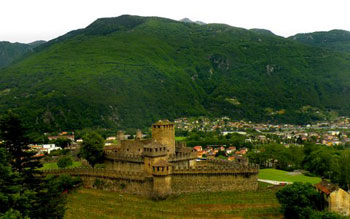 Even within the Swiss-German majority population, we discover, there are minority subcultures. Our friend Andres turns out to be a Walser, the proud member of an alpine tribe that numbers about 20,000 in Switzerland and has sizable communities in neighbouring Italy, Liechtenstein and Austria as well. They trace their history back to the south-central canton of Wallis and an outward migration that began in the 13th century. Historians debate whether the cause was overpopulation, or feudal politics, or possibly the plague. Those who moved northeastward into Graubuenden and beyond were attracted by empty high-elevation lands to settle and privileges offered to them by feudal lords in exchange for doing military service, notably patrolling and controlling the crucial mountain passes.
Even within the Swiss-German majority population, we discover, there are minority subcultures. Our friend Andres turns out to be a Walser, the proud member of an alpine tribe that numbers about 20,000 in Switzerland and has sizable communities in neighbouring Italy, Liechtenstein and Austria as well. They trace their history back to the south-central canton of Wallis and an outward migration that began in the 13th century. Historians debate whether the cause was overpopulation, or feudal politics, or possibly the plague. Those who moved northeastward into Graubuenden and beyond were attracted by empty high-elevation lands to settle and privileges offered to them by feudal lords in exchange for doing military service, notably patrolling and controlling the crucial mountain passes.
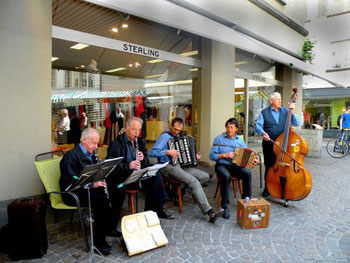 Andres regales us with stories of his upbringing in the 1960s and 1970s on a subsistence farm high in the Praettigau Valley, just east of Graubuenden’s charming capital city of Chur, where he now works. Like his neighbours, his family had only a few cows, which he helped to feed and milk in winter; in summer they were moved up to higher grazing pastures. A few men from the hamlet tended everyone’s cows, milking them collectively and making cheese every day. The cheese was brought down in autumn and divided up, a festive event that remains an annual celebration. Each family also had a vegetable garden and perhaps a pig, chickens and rabbits. Yet they eked out a livelihood. Andres hiked, or sledded in winter, down to school in the larger village below. He and Margit drive us up switchback roads to a scenic Walser village, Tenna, with a population of around 100 overlooking the Safien valley. There is a two-room school, a cheese-making shop, and a church dating to 1524. The gravestones record only a handful of family names, generation after generation. Houses have huge stacks of firewood and tiny outbuildings that are actually ovens for baking bread. Cows and sheep graze nearby; in May, they have not yet been moved to higher slopes. The weather is sunny and warm, perfect for lunch on an outdoor hotel terrace. We try the barley soup, grilled mushrooms on bread, and local hard cider. Andres greets an elderly couple, who immediately recognize his dialect. You must be from Praettigau, they say, and they are too. They even knew his late parents, but have retired to this distant, yet also Walser, village.
Andres regales us with stories of his upbringing in the 1960s and 1970s on a subsistence farm high in the Praettigau Valley, just east of Graubuenden’s charming capital city of Chur, where he now works. Like his neighbours, his family had only a few cows, which he helped to feed and milk in winter; in summer they were moved up to higher grazing pastures. A few men from the hamlet tended everyone’s cows, milking them collectively and making cheese every day. The cheese was brought down in autumn and divided up, a festive event that remains an annual celebration. Each family also had a vegetable garden and perhaps a pig, chickens and rabbits. Yet they eked out a livelihood. Andres hiked, or sledded in winter, down to school in the larger village below. He and Margit drive us up switchback roads to a scenic Walser village, Tenna, with a population of around 100 overlooking the Safien valley. There is a two-room school, a cheese-making shop, and a church dating to 1524. The gravestones record only a handful of family names, generation after generation. Houses have huge stacks of firewood and tiny outbuildings that are actually ovens for baking bread. Cows and sheep graze nearby; in May, they have not yet been moved to higher slopes. The weather is sunny and warm, perfect for lunch on an outdoor hotel terrace. We try the barley soup, grilled mushrooms on bread, and local hard cider. Andres greets an elderly couple, who immediately recognize his dialect. You must be from Praettigau, they say, and they are too. They even knew his late parents, but have retired to this distant, yet also Walser, village.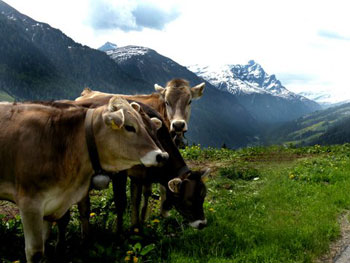 Another evening, Margit and Andres take us to a concert at a pub high in the Praettigau valley, where Andres grew up, in a village with stunning Alpine architecture where one of his sisters now lives. He is the only one of five siblings who has left the valley, although he has not moved very far. Between songs, the band tells jokes in Walser German. Andres laughs along, but Margit, who was raised in Germany and is totally familiar with mainstream Swiss German, can hardly make out a word. But if we were expecting Tirolean um-pa-pa tunes, we were mistaken. The popular local trio—they have performed 1000 times over 20 years—treats us to to an eclectic display of world music: klezmer, gypsy, tango, blues, Celtic, on a bevy of instruments. Andres’ sister tells us that she is leaving in the morning for a cycling trip in Ireland. Everyone is from the valley, but they all seem well educated and most speak remarkably good English. This is 21st century Switzerland. They may be locals, but they are by no means yokels.
Another evening, Margit and Andres take us to a concert at a pub high in the Praettigau valley, where Andres grew up, in a village with stunning Alpine architecture where one of his sisters now lives. He is the only one of five siblings who has left the valley, although he has not moved very far. Between songs, the band tells jokes in Walser German. Andres laughs along, but Margit, who was raised in Germany and is totally familiar with mainstream Swiss German, can hardly make out a word. But if we were expecting Tirolean um-pa-pa tunes, we were mistaken. The popular local trio—they have performed 1000 times over 20 years—treats us to to an eclectic display of world music: klezmer, gypsy, tango, blues, Celtic, on a bevy of instruments. Andres’ sister tells us that she is leaving in the morning for a cycling trip in Ireland. Everyone is from the valley, but they all seem well educated and most speak remarkably good English. This is 21st century Switzerland. They may be locals, but they are by no means yokels.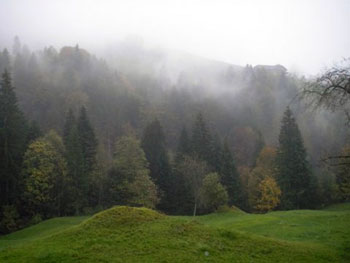
 I’ve daydreamed about one day being able to scale a European mountaintop so I could sing that quintessential European classic pop song “Una Paloma Blanca.” It was in my grasp, but the Mt. Pilatus’ dragons and ghost of Pontius Pilate would not hear of it. Instead, they had a more memorable adventure in store for me. You see, I planned my day to go to the top of Mt. Pilatus via The Golden Round Trip. Mt. Pilatus is one of the Swiss Alps gateways that helped usher in Switzerland as a tourist hotspot in the late 19th century. I expected to do a good amount of hiking, but steady rainfall in the lower elevations of Luzern and reports of snow up the mountain before I even left Luzern appeared to hamper my day.
I’ve daydreamed about one day being able to scale a European mountaintop so I could sing that quintessential European classic pop song “Una Paloma Blanca.” It was in my grasp, but the Mt. Pilatus’ dragons and ghost of Pontius Pilate would not hear of it. Instead, they had a more memorable adventure in store for me. You see, I planned my day to go to the top of Mt. Pilatus via The Golden Round Trip. Mt. Pilatus is one of the Swiss Alps gateways that helped usher in Switzerland as a tourist hotspot in the late 19th century. I expected to do a good amount of hiking, but steady rainfall in the lower elevations of Luzern and reports of snow up the mountain before I even left Luzern appeared to hamper my day.
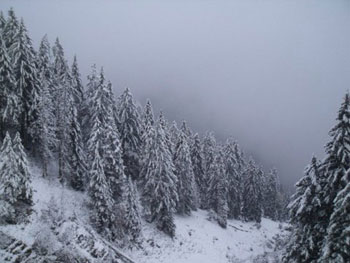 My second leg of the “Golden Round Trip” proceeded on the world’s steepest cogwheel railway from Alpnachstad, where us passengers experienced gradients as high as 48 per cent at speeds of about six to seven miles per hour. Going up, we were surrounded by thick evergreen forests being hammered by rain, then light snow, and then heavier snow as the visibility decreased. But I began to notice something on my ascent: I wasn’t feeling queasy anymore and my sinuses were clearing up as the 33 minute ride (that’s half price with a Swiss Pass) proceeded through several tunnels barely wide enough for the cog way carriages. The driver masterfully had to navigate the heavier snow amidst sudden jerks and stops. He laughed even though I was anxious (because there are three braking systems to prevent catastrophe).
My second leg of the “Golden Round Trip” proceeded on the world’s steepest cogwheel railway from Alpnachstad, where us passengers experienced gradients as high as 48 per cent at speeds of about six to seven miles per hour. Going up, we were surrounded by thick evergreen forests being hammered by rain, then light snow, and then heavier snow as the visibility decreased. But I began to notice something on my ascent: I wasn’t feeling queasy anymore and my sinuses were clearing up as the 33 minute ride (that’s half price with a Swiss Pass) proceeded through several tunnels barely wide enough for the cog way carriages. The driver masterfully had to navigate the heavier snow amidst sudden jerks and stops. He laughed even though I was anxious (because there are three braking systems to prevent catastrophe). The Entlebuch resides west of Luzern, about 35 minutes by train at the stop called Schupfheim. It’s made up of eight villages and spans some 154 square miles and contains many of the Alps’ rolling foothills: roughly one per cent of the total land area of Switzerland. One fourth of this area is now protected moors (highland marshlands), which exuded a pleasantly eerie feeling amidst the fog, making me wonder if any monsters were lurking there.
The Entlebuch resides west of Luzern, about 35 minutes by train at the stop called Schupfheim. It’s made up of eight villages and spans some 154 square miles and contains many of the Alps’ rolling foothills: roughly one per cent of the total land area of Switzerland. One fourth of this area is now protected moors (highland marshlands), which exuded a pleasantly eerie feeling amidst the fog, making me wonder if any monsters were lurking there.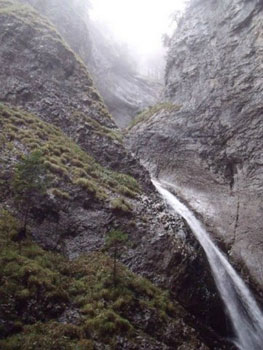 The town of Fluhi is on the other side of the Entlebuch, and provided me a great opportunity to see more breathtaking fall scenery in the Pre-Alps (foothills), ending at Cheesiloch, a canyon with a 130-plus foot drop. Prior to the path leading directly to the canyon, a 45 minute hike from town begins that has winding roads, cows who love being photographed (kept apart by a “fence” made of just one rope), and rolling meadows. The last 30 minutes to the canyon would be one of my most challenging hikes I’ve ever taken, and once again, my walking pole saved the day, for the narrow pathway was sharp and rocky, and drenched with wet maple leaves. Nature’s soundtrack included hearing the pleasant babbling of the Rotbach stream as I proceeded deeper into the dense evergreen forest with deep drops to the canyon below.
The town of Fluhi is on the other side of the Entlebuch, and provided me a great opportunity to see more breathtaking fall scenery in the Pre-Alps (foothills), ending at Cheesiloch, a canyon with a 130-plus foot drop. Prior to the path leading directly to the canyon, a 45 minute hike from town begins that has winding roads, cows who love being photographed (kept apart by a “fence” made of just one rope), and rolling meadows. The last 30 minutes to the canyon would be one of my most challenging hikes I’ve ever taken, and once again, my walking pole saved the day, for the narrow pathway was sharp and rocky, and drenched with wet maple leaves. Nature’s soundtrack included hearing the pleasant babbling of the Rotbach stream as I proceeded deeper into the dense evergreen forest with deep drops to the canyon below.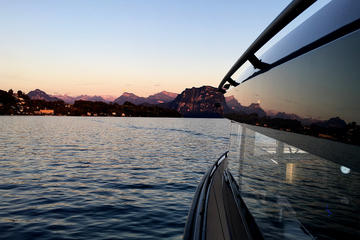
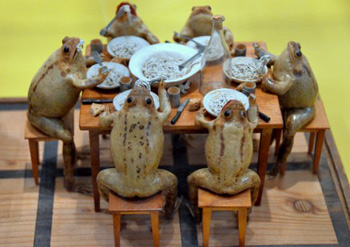
 However, it’s not quite as dire as it sounds for Kermit and Jeremy Fisher as they have nothing to fear these days: The Frog Museum in Estavayer-le-Lac is not looking for new acquisitions. The fact of the matter is that the museum’s prized holdings were actually created in the 1850’s by an eccentric Napoleonic guard officer. Francois Perrier, reputedly an officer and a gentleman, had a fascination for frogs and collected them while on walks through the countryside. He also had too much time on his hands: Perrier would take his collection of frogs home, extract the innards through their mouths, and then stuff the hollow skin with sand, all the while modeling and dressing the frog corpses in uncanny human dioramas of scenes from everyday life.
However, it’s not quite as dire as it sounds for Kermit and Jeremy Fisher as they have nothing to fear these days: The Frog Museum in Estavayer-le-Lac is not looking for new acquisitions. The fact of the matter is that the museum’s prized holdings were actually created in the 1850’s by an eccentric Napoleonic guard officer. Francois Perrier, reputedly an officer and a gentleman, had a fascination for frogs and collected them while on walks through the countryside. He also had too much time on his hands: Perrier would take his collection of frogs home, extract the innards through their mouths, and then stuff the hollow skin with sand, all the while modeling and dressing the frog corpses in uncanny human dioramas of scenes from everyday life. With that being said; nevertheless, there’s something compelling about a Swiss medieval town noted for its obsession with stuffed frogs (they are actually a tannish-brown instead of green) composed of skin and sand. Behind glass and meticulously preserved, the vignettes are parodies of human life in the 19th century. The frogs do human things like playing cards and dominoes, shooting billiards, feasting at a long table, eating spaghetti at a smaller table, getting a haircut at the barbershop, sitting at a desk in an old-fashioned schoolroom…and then there’s my favorite conundrum…a frog mounted on top of a squirrel, riding the furry rodent like a cavalry soldier might ride a horse.
With that being said; nevertheless, there’s something compelling about a Swiss medieval town noted for its obsession with stuffed frogs (they are actually a tannish-brown instead of green) composed of skin and sand. Behind glass and meticulously preserved, the vignettes are parodies of human life in the 19th century. The frogs do human things like playing cards and dominoes, shooting billiards, feasting at a long table, eating spaghetti at a smaller table, getting a haircut at the barbershop, sitting at a desk in an old-fashioned schoolroom…and then there’s my favorite conundrum…a frog mounted on top of a squirrel, riding the furry rodent like a cavalry soldier might ride a horse. Whether you reel back cautiously from the ludicrously odd or openly admire Perrier’s masterpiece of taxidermy and his tableau interpretations, one thing is for certain: It is an unusual tribute to anthropomorphic art and a social commentary on life in his times.
Whether you reel back cautiously from the ludicrously odd or openly admire Perrier’s masterpiece of taxidermy and his tableau interpretations, one thing is for certain: It is an unusual tribute to anthropomorphic art and a social commentary on life in his times.


 Because the Swiss are known for their quality chocolate making, and combined with my passion for the confection, it was on my agenda to check out some of the shops, nestled among other outlets selling high line fashions, watches, and jewelry. Two chocolate shops, Confiserie Sprungli and Teuscher produced a hearty scent of cocoa that pleasantly flowed through my nostrils. It was a chocolate feast for my eyes, as meticulously-decorated items with such names like Pariser-Konfekt and Gianduia-Rustica lined the shelves of delights, many of which are handmade at Confiserie Sprungli.. Even though chocolate prices range around $50 a pound here, one can keep things more budget-friendly by purchasing the treats in 100 gram increments (around 3.5 oz).
Because the Swiss are known for their quality chocolate making, and combined with my passion for the confection, it was on my agenda to check out some of the shops, nestled among other outlets selling high line fashions, watches, and jewelry. Two chocolate shops, Confiserie Sprungli and Teuscher produced a hearty scent of cocoa that pleasantly flowed through my nostrils. It was a chocolate feast for my eyes, as meticulously-decorated items with such names like Pariser-Konfekt and Gianduia-Rustica lined the shelves of delights, many of which are handmade at Confiserie Sprungli.. Even though chocolate prices range around $50 a pound here, one can keep things more budget-friendly by purchasing the treats in 100 gram increments (around 3.5 oz). Switzerland is one of the most expensive countries in the world to visit, but ironically, Zurich gives away one of the most important staples of life: water, via its 1,200 public fountains that dispense the crystal clear liquid (my taste buds noticed no chemical taste) from unique statues that have needles on top of them so as to keep pigeons away. I couldn’t help but notice St. Peter’s church, one of the conspicuous landmarks of the area, for its 28 foot in diameter clock face, the largest in Europe. I wanted a nice vantage point of the Old City, and got it a few blocks north at the Lindenhof. It’s called that because of the Linden trees that dominate the park area that overlooks the river, offering great views of the Old Town. It’s the highest point of the Old City that dates back to pre-Roman times, when the Celtic Helvetti resided here. Across the river, I spotted the double Neo-Gothic domes of the towers of the Grossmuenster, which dates back to the 12th century, and where the Reformation began in the country.
Switzerland is one of the most expensive countries in the world to visit, but ironically, Zurich gives away one of the most important staples of life: water, via its 1,200 public fountains that dispense the crystal clear liquid (my taste buds noticed no chemical taste) from unique statues that have needles on top of them so as to keep pigeons away. I couldn’t help but notice St. Peter’s church, one of the conspicuous landmarks of the area, for its 28 foot in diameter clock face, the largest in Europe. I wanted a nice vantage point of the Old City, and got it a few blocks north at the Lindenhof. It’s called that because of the Linden trees that dominate the park area that overlooks the river, offering great views of the Old Town. It’s the highest point of the Old City that dates back to pre-Roman times, when the Celtic Helvetti resided here. Across the river, I spotted the double Neo-Gothic domes of the towers of the Grossmuenster, which dates back to the 12th century, and where the Reformation began in the country. The beauty of a place truly shows through, not when the weather is picture perfect with the sun a blazing, but when the weather isn’t ideal, as was the case with my ascent to Uetliberg to get a bird’s eye view of the area. Once again, with my Swiss Pass, I was able to take a 22 or so minute commuter train ride from the Hauptbahnhof (Tracks 1 or 2) to the base, taking in chalet homes, green soccer pitches, and Switzerland’s own brand of autumn foliage that complimented the greenway paths along the tracks. From the station above, I proceed upwards for about ten minutes on dirt paths “beautifully-littered” with fallen red, green, brown, orange, and yellow foliage. As I ascended the mountain top, I noticed tall giraffe-like figurines whose antlers serve as lights. There are numerous hiking and biking paths that cut through lush greenery that makes getting lost a pleasant experience.
The beauty of a place truly shows through, not when the weather is picture perfect with the sun a blazing, but when the weather isn’t ideal, as was the case with my ascent to Uetliberg to get a bird’s eye view of the area. Once again, with my Swiss Pass, I was able to take a 22 or so minute commuter train ride from the Hauptbahnhof (Tracks 1 or 2) to the base, taking in chalet homes, green soccer pitches, and Switzerland’s own brand of autumn foliage that complimented the greenway paths along the tracks. From the station above, I proceed upwards for about ten minutes on dirt paths “beautifully-littered” with fallen red, green, brown, orange, and yellow foliage. As I ascended the mountain top, I noticed tall giraffe-like figurines whose antlers serve as lights. There are numerous hiking and biking paths that cut through lush greenery that makes getting lost a pleasant experience. Even though Zurich West is a just a few minutes away from the Haptbahnhof by numerous S-Bahnen commuter trains to Hardbrucke station (including the S9) or around ten minutes by tram, it was as if I stepped out into a totally different world. After disembarking, I noticed I was close to 415 foot high modern skyscraper called the Prime Tower. It’s a world that’s a cross between a post-modern and old Communist-style city mixed uniquely with new ideas in design that cherishes the old remnants of Zurich’s past going back two centuries. This area was once made up of factories and foundries that produced soap, various mechanical parts, etc. In the early 1990s, Zurich West began to revitalize itself, using the skeletons of its industrial past as a basis for what it is today, a bustling multi-cultural melting pot containing trendy clubs and bars with names like “Supermarket”, retail and second hand shops (there’s a nicely-stocked Salvation Army thrift store that’s called “Heils-Armee”), and offices full of white collar workers glued to their laptops.
Even though Zurich West is a just a few minutes away from the Haptbahnhof by numerous S-Bahnen commuter trains to Hardbrucke station (including the S9) or around ten minutes by tram, it was as if I stepped out into a totally different world. After disembarking, I noticed I was close to 415 foot high modern skyscraper called the Prime Tower. It’s a world that’s a cross between a post-modern and old Communist-style city mixed uniquely with new ideas in design that cherishes the old remnants of Zurich’s past going back two centuries. This area was once made up of factories and foundries that produced soap, various mechanical parts, etc. In the early 1990s, Zurich West began to revitalize itself, using the skeletons of its industrial past as a basis for what it is today, a bustling multi-cultural melting pot containing trendy clubs and bars with names like “Supermarket”, retail and second hand shops (there’s a nicely-stocked Salvation Army thrift store that’s called “Heils-Armee”), and offices full of white collar workers glued to their laptops. As I walked on the wide walkways among the edifices, I took in such bizarre sights as the the Freitag shop which uses 19 old shipping crates stacked nine stories high to sell handbags and wallets made out of recycled industrial components. And down the street, the outlets in a strip mall called Im Viadukt are nestled inside the arches of a railroad bridge that was built in the late 1800s.
As I walked on the wide walkways among the edifices, I took in such bizarre sights as the the Freitag shop which uses 19 old shipping crates stacked nine stories high to sell handbags and wallets made out of recycled industrial components. And down the street, the outlets in a strip mall called Im Viadukt are nestled inside the arches of a railroad bridge that was built in the late 1800s.

